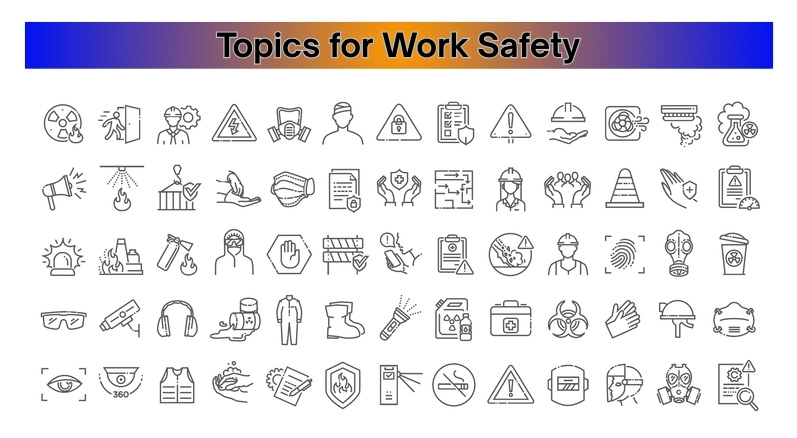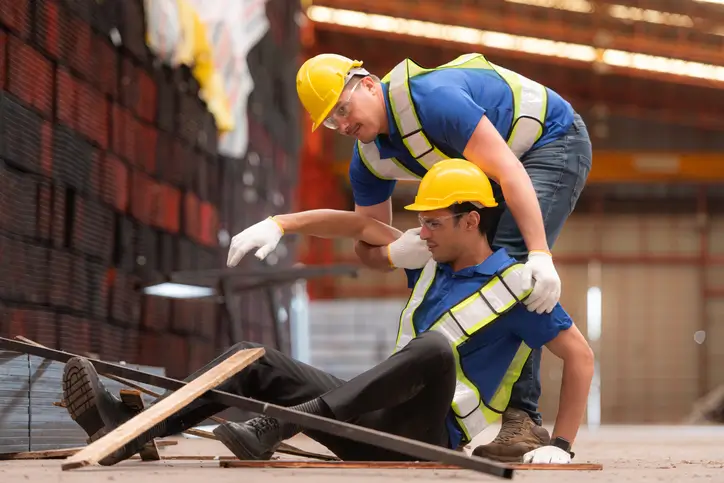The construction sector, encompassing tasks like building, renovating, and repairing structures, poses significant risks to its workforce. Workers frequently encounter dangers such as falls from heights, machinery without protective measures, collisions with heavy machinery, electrical hazards, silica exposure, and asbestos-related health risks.
Despite advancements in safety gear, technological interventions, and training modules, the construction domain grapples with alarming rates of both fatal and non-fatal incidents. Notably, while construction personnel constitute merely 5% of the U.S. workforce, they account for a staggering 18% of work-related fatalities. This striking disproportion underscores the urgent imperative to bolster safety measures within the construction realm.
OSHA 30-Hour Construction Training
The OSHA 30-Hour Construction courses offer comprehensive instruction on OSHA safety guidelines for construction workers and supervisors. Upon successful completion, participants earn an official OSHA card, endorsed by the U.S. Department of Labor (DOL), validating their knowledge and compliance with industry-specific safety standards.
Target Audience For OSHA 30-Hour Construction Training

The OSHA Outreach training is invaluable for workers across sectors like construction, building development, and related fields. Specifically, the OSHA 30-Hour Construction training emphasizes fostering a safe environment. It equips participants with skills to recognize, anticipate, and mitigate potential workplace hazards, ensuring healthier and more secure work.
OSHA 30-Hour Construction Training Content
The OSHA 30-Hour Construction training delves comprehensively into essential safety topics. Participants are acquainted with the OSHA Construction Focus Four Hazards, encompassing Fall, Caught-In/-Between, Struck-By, and Electrocution risks. Additionally, the curriculum highlights cranes, steel structures, confined spaces, and fire hazards. It educates on activities potentially causing MSD and RMD injuries, emphasizing the selection and proper utilization of Personal Protective Equipment (PPE) to ensure comprehensive workplace safety.

This intensive 30-hour program equips employees with knowledge and strategies to identify, mitigate, and prevent prevalent workplace hazards effectively. A brief look at its curriculum reveals a multifaceted approach that includes:
- OSHA Inspection Process: Understanding of OSHA’s inspection protocols is pivotal for maintaining workplace standards.
- Permit Requirements: Grasping the details of permit necessities ensures legal and procedural compliance.
- Health and Safety Programs: Comprehensive insights into establishing robust health and safety initiatives within organizations.
- Emergency Action Planning: Crafting actionable emergency response strategies to safeguard employees during unexpected events.
- Hazard Reporting Protocols: Streamlining processes for the timely identification and reporting of workplace hazards.
- Industrial Hygiene: A deep study of maintaining sanitary and safe working environments.
The OSHA-30 course online format offers flexibility and accessibility. Moreover, the course is available both in-person and online, allowing participants to conveniently access comprehensive safety training from anywhere, ensuring ease of learning and accommodating diverse schedules.
Benefits Of OSHA-30 Training For The Construction Industry
The OSHA 30-Hour Construction industry training serves as an exhaustive guide, encapsulating all areas related to environmental hazards in workplaces, thus providing benefits to the public, company, and employees in the following way:
Mitigating Fatalities through Proactive Measures
A staggering 60% of fatalities in construction sites can be attributed to the ‘FATAL FOUR’ as identified by OSHA: falls, electrocutions, being trapped between machinery, and object strikes. Hence, fostering a safety-centric culture is paramount. Employers must prioritize OSHA training, ensuring their workforce is well-versed in safety protocols and regulations.
Navigating Legal Landmines: Compliance and Penalties
OSHA mandates employers to furnish a secure workplace, with stringent penalties for non-compliance. The escalation in OSHA Civil Penalties in 2022 underscores the gravity of adherence. Employers must remain vigilant, as serious injuries or fatalities could precipitate legal ramifications, emphasizing the need for diligent training initiatives.
Fostering a Safety-First Environment
Adherence to OSHA guidelines is not merely a regulatory requisite but a moral obligation. Prioritizing safety not only safeguards employees but also shields organizations from potential violations, penalties, and compensation claims.
Enhancing Workers’ Safety Acumen
With varied challenges across construction sites, OSHA training empowers workers in the construction industry to recognize and address potential hazards in the industry proactively. Equipping employees with actionable insights augments their ability to uphold safety standards and fosters a proactive safety culture.
Upholding Federal Compliance
OSHA construction training mandates are entrenched in federal laws, necessitating unwavering compliance. Employers must prioritize adherence to preempt federal violations, safeguarding both employees and organizational integrity.
Supporting Public Safety
Construction sites’ hazards transcend workers, imperiling bystanders. Prioritizing OSHA safety programs fortifies public safety, mitigates financial ramifications, and fosters community trust.
Streamlining Safety Protocols
The dynamic nature of construction sites emphasizes safety challenges. OSHA training equips employees to navigate these complexities proficiently, facilitating a streamlined and risk-mitigated work environment.
Instilling Accountability
Implementing OSHA safety programs instills accountability, fostering a culture where employees proactively prioritize safety, and recognizing its intrinsic value and organizational implications.
Upholding OSHA Standards in the Workplace
Adhering to the OSHA 30-Hour construction training raises a healthy team safety culture in the workplace, underscoring collective responsibility between management and employees to prevent potential accidents. This active approach yields multiple advantages: it unlocks financial benefits, curtails work-related injuries and illnesses and cultivates a comprehensive understanding of managing workplace hazards.
Moreover, it elevates company standards, solidifying a commitment to excellence in safety protocols. Crucially, initiating OSHA training at the onset of employment instills confidence, ensuring readiness as employees transition to high-risk areas. In essence, OSHA compliance not only safeguards personnel but also fortifies organizational integrity and operational efficiency.
Benefits Of Upholding OSHA-30 Construction Certification Card

The OSHA 30-hour certification serves as a foundational introduction to occupational safety and health, specifically tailored for workers in the construction industry. This comprehensive training equips participants with a fundamental understanding of identifying and proactively mitigating potential workplace hazards. A significant advantage of this training lies in its immense impact on workplace safety, translating to fewer accidents.
This reduction not only preserves the well-being of employees but also translates into considerable cost savings for companies and taxpayers alike. Furthermore, getting this training initiative establishes a benchmark for health and safety protocols, positioning it as the new gold standard for mandated safety programs. Therefore, getting an OSHA 30-hour training DOL card emerges as a pivotal tool, democratizing access to essential safety knowledge and fostering a culture of proactive risk management across diverse industry sectors.
The tangible advantages span financial savings, reduced injuries, and elevated safety standards, resonating across the workforce spectrum. Emphasizing collective responsibility, this training underscores the imperative of a safety-first mindset, championing excellence, and fostering accountability. Ultimately, OSHA 30-hour training stands as a cornerstone, epitomizing the industry’s commitment to excellence, safety, and operational efficiency.
Get Ready To Enroll In OSHA 30
The construction industry’s inherent risks demand a proactive approach to safety, with the OSHA 30-hour training emerging as a beacon of comprehensive safety education. This program not only equips workers with essential skills to navigate hazards but also significantly reduces workplace accidents, ensuring both individual and collective well-being. Beyond individual benefits, adherence to OSHA standards bolsters organizational integrity, ensuring compliance, and fortifying public trust.








